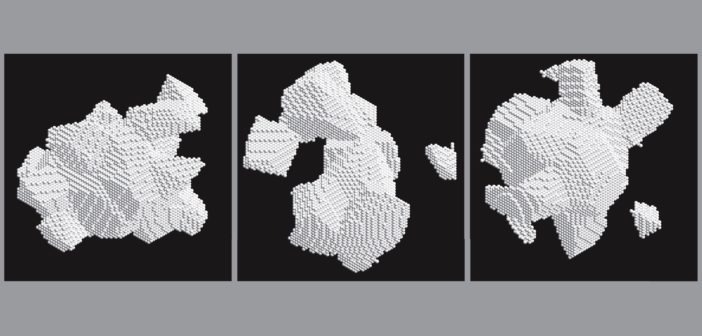What do you see when you look at these images? Clouds? Islands? Legos? Think smaller: simulated dust particles! Modelers often approximate dust grains as spheres, but real dust grains likely come in a range of shapes. A new publication led by Jessica Arnold (Army Research Laboratory) explores the impact of dust shapes on models of debris disks around young stars. Irregularly shaped dust grains, like those shown above, have been used to reproduce spectra of dust grains in a lab setting as well as those of dusty comets, making them a promising tool for modelers. Arnold and collaborators modeled dust grains three ways — as solid spheres, porous spheres, and randomly generated irregular shapes — to constrain the properties of the debris disk surrounding AU Microscopii. The three shapes yielded different best-fitting dust grain size distributions for AU Microscopii’s disk, suggesting that future modeling should account for the uncertainties introduced by grain shapes. To learn more about how astronomers decipher distant dust, be sure to read the full article below!
Citation
“Stumbling over Planetary Building Blocks: AU Microscopii as an Example of the Challenge of Retrieving Debris-disk Dust Properties,” Jessica A. Arnold et al 2022 ApJ 930 123. doi:10.3847/1538-4357/ac63a9

